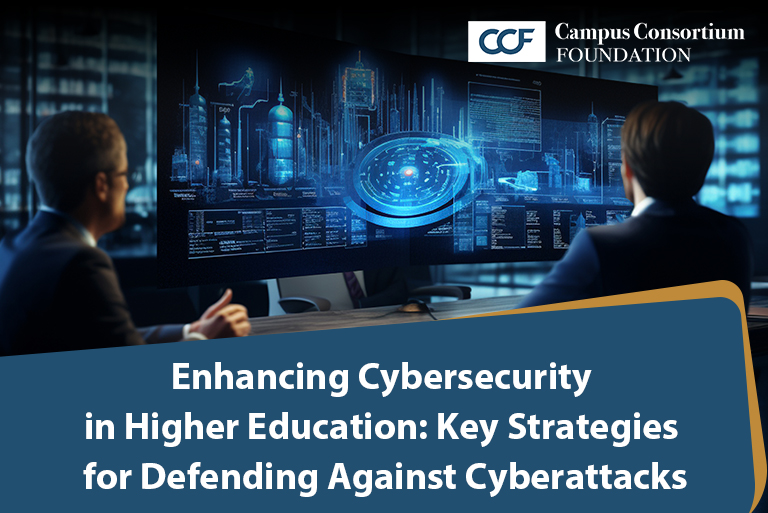Higher education institutions find themselves increasingly vulnerable to a variety of cyber threats. Sensitive data, such as student records, financial information, and research findings, reside in their systems making them prime targets for cybercriminals. Defending against cyber threats requires a multifaceted approach that goes beyond traditional security measures. Both proactive and reactive strategies are necessary to ensure a protected and resilient cyber environment.
The Growing Cybersecurity Challenges in Higher Education
In recent years, cyberattacks targeting higher education institutions have become more sophisticated and pervasive. From phishing schemes to ransomware attacks, the methods employed by cybercriminals are evolving quickly. These incidents can result in data breaches, operational disruptions, and reputational damage, all of which have serious consequences for students, staff, and the broader academic community.
Unlike corporations, higher education institutions often face unique challenges when it comes to cybersecurity. Limited budgets, diverse IT environments, and a culture of open access make them more susceptible to attacks. Additionally, institutions must comply with stringent data protection regulations, adding another layer of complexity to their cybersecurity efforts. Given these challenges, it is essential for institutions to implement comprehensive cybersecurity strategies that address the entire threat landscape.
Key Strategies for Defending Against Cyber Threats
To mitigate risks, higher education institutions can adopt a balanced approach that includes both proactive and reactive measures. These strategies not only enhance security but also support operational efficiency, allowing IT teams to focus on their core functions.
1. Proactive Security Measures
Proactive measures are critical for anticipating and addressing threats before they escalate. Higher education institutions can benefit from the following strategies:
Threat Hunting: Proactively identifying vulnerabilities within the network can prevent potential attacks. By routinely scanning systems, institutions can discover and resolve weaknesses before they are exploited.
Staff and Student Training: People are often the first line of defense against cyber threats. Regular training on recognizing phishing attempts, handling sensitive data, and maintaining strong passwords can reduce the likelihood of successful attacks.
Network and Endpoint Monitoring: Continuous monitoring of network activity and endpoint devices helps detect suspicious behavior in real time. With prompt alerts and insights into anomalies, institutions can quickly address potential security incidents.
2. Reactive Security Measures
Despite the best preventive efforts, cyber threats can still occur. Having reactive measures in place ensures that institutions can respond swiftly and effectively when incidents arise:
Incident Response Planning: Developing a comprehensive incident response plan allows institutions to react to cyber threats methodically and efficiently, minimizing the impact on operations.
Firewalls and Antivirus Solutions: Firewalls and antivirus programs are fundamental components of any cybersecurity strategy. By providing an additional layer of defense, these tools help block unauthorized access and prevent malware infections.
Spam Filters and Ad Blockers: Filtering out unwanted emails and blocking ads reduces the chances of exposure to phishing scams and other malicious content.
Regular Backups and Data Recovery Plans: In case of a ransomware attack, regular data backups ensure that critical information can be restored, mitigating the potential impact on institutional data.
A Holistic Approach to Cybersecurity in Higher Education
Effective cybersecurity in higher education requires a combination of advanced technology, staff training, and robust policies. Institutions can consider leveraging external expertise or adopting managed services to augment their cybersecurity efforts, particularly when internal resources are limited. By integrating these elements into a cohesive strategy, higher education institutions can reduce risks and enhance their ability to respond to cyber threats.
Cybersecurity is an ongoing process, and maintaining a secure environment requires constant vigilance and adaptation. As cyber threats continue to evolve, higher education institutions must remain agile, adopting new technologies and strategies to stay ahead of potential risks. With a proactive mindset and a commitment to continuous improvement, institutions can build a secure foundation that protects both institutional assets and the personal data of students and staff.




